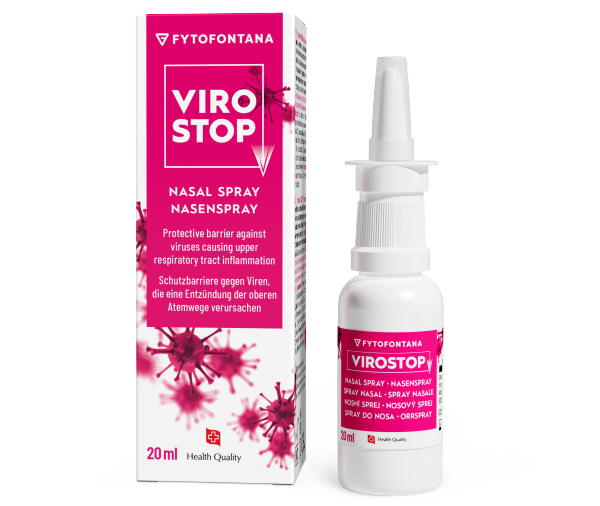Antibiotics won't help viral infections, but their side effects can linger. Learn how differentiating between a CRP test and a Strep test can guide you in determining the necessity of antibiotics.
Colds, sore throats and coughs are accompanied by viral and bacterial infections of the respiratory tract. The symptoms are similar in both types and it is difficult to distinguish between them. In such a case, two simple tests will help us avoid the unnecessary use of antibiotics. Both the CRP test and the Strep test can be administered by a doctor, or their home versions are also available at your local pharmacy in form of self-tests.
Why avoid unnecessary antibiotic use?
Data collected by the European Center for Disease Prevention and Control (ECDC) between 2016 and 2020 showed a dangerous fact. On average, up to 35,000 inhabitants of the European Union die annually as a result of complications due to antibiotic resistance.
This means that almost 100 people die every day from infections that we could have cured with available antibiotics just a few years ago. However, in the meantime, the bacteria have developed a defense against them and are no longer effective. The excessive and often unnecessary use of antibiotics contributes to this, and it is predicted that it will get even worse.
At the same time, 90 to 95% of all upper respiratory tract infections are caused by viruses, and antibiotics have no effect on them. By consuming them, we not only do not help, but also damage the gut microbiome. If in the future we get a bacterial infection caused by a resistant strain, the doctors probably won't be able to help us.
How to distinguish viral and bacterial infection of the respiratory tract?
Bacterial and viral respiratory tract infections have a lot in common. Many of them share similarities in transmission, symptoms, and symptomatic treatment. However, they are caused by two different types of microorganisms, so if we want to treat the underlying cause of the illness, we must choose targeted treatment.
Bacteria will be treated with appropriate antibiotics. For viruses, we can use a combination of oral and nasal spray VIROSTOP , which will prevent the virus from infecting the surrounding cells. You can also buy VIROSTOP in the form of pastilles. In serious cases, the doctor may also prescribe antivirals for a viral infection.
However, in order to know what kind of infection it is, we must be able to distinguish them from each other. For this, doctors have to examine the patient, and they are helped by two easily available, reliable tests: the CRP test and the Strep test.
What is a CRP test?
CRP stands for C-reactive protein, which is produced by the liver in response to inflammation. It can increase not only during infections but also in autoimmune diseases, certain types of cancer, and even conditions like heart attacks or Alzheimer's disease. However, it's important to note that not all types of inflammation result in the same CRP levels. For instance, during a viral infection, the concentration of this protein rises only slightly, while in the case of a bacterial infection, it can rapidly increase to high levels within a few hours.
The CRP test is often used in practice. It is simple, available, reliable, and if the doctor has a CRP device right in the clinic, the result is available within a few minutes. Of course, it can also be determined in the laboratory, but there I have to wait 1 day for the result.
In recent years, patients have had the option to purchase self-tests at the pharmacy and perform an indicative version at home. This self-testing can be a valuable tool when we need to determine whether a doctor's visit is necessary or if it's sufficient to let the illness run its course. If a home CRP test yields a positive result, it indicates the need for a doctor's appointment. The doctor will then choose the appropriate treatment based on the patient's current symptoms and other health considerations.
What do CRP test values mean?
Measured values in adults and older children with symptoms of acute infection mean:
- A CRP value of up to 5 mg/l is a normal value;
- A CRP value in the range of 6 to 40 mg/l usually indicates a viral infection;
- A CRP value in the range of 40-50 mg/l means the so-called the gray zone, which already belongs to the hands of the doctor. It can be a severe viral infection (such as the flu) or an already advanced bacterial infection. Depending on the patient's condition, the doctor will choose the next procedure;
- A CRP value above 50 already means a bacterial infection with a high probability, and the doctor tends to reach for antibiotics;
- CRP values above 200 are extremely elevated and this is a serious bacterial infection.
|
CRP value |
Rating |
Possible causes and treatment |
|
≤ 5 mg/l |
Normal value |
Without treatment |
|
6 – 40 mg/l |
Slightly increased |
Viral infection, suitable VIROSTOP |
|
40-50 mg/l |
Gray zone |
Viral or bacterial infection, treatment in the hands of a doctor |
|
Above 50 mg/l |
A significant increase |
Bacterial infection, treatment guided by a doctor |
Smaller children generally have a lower CRP level, and parents tend to see a doctor earlier with a small child. For young children, therefore, 25 mg/l is taken as the limit value.
Reaching for a CRP test makes sense for more serious respiratory tract infections, that is, for any acute infection with the exception of the common cold. It is justified when bacterial inflammation of the sinuses, inflammation of the throat (angina), or inflammation of the bronchi or lungs is suspected.
C-reactive protein to form in the liver and increase in the blood. The first measurable values are after 4-6 hours, they reach the maximum after 24-48 hours. With the exception of small children and if the patient's condition is not particularly serious, it is advisable to wait at least 24 hours from the first symptoms for a common illness. In general, values rise during the first 5 days, then begin to decline.
How can a Strep test help?
A sore throat often accompanies both viral and bacterial infections. Streptococcal infections have the greatest risk of complications, so it is important to diagnose such an infection as soon as possible. There is a Strep test for this, which some doctors also use in their clinics. Although this test is not as widespread as the CRP test, there is also a home version of it in the pharmacy.
Did a virus cause your illness? What now?
If your symptoms and CRP test values suggest a viral infection, this does not mean that you should not be treated. In addition to medicines and supporting means to manage symptoms or to support immunity, you can also help the body directly. Products from the VIROSTOP line contain plant extracts and act locally on the surface of the mucous membranes. Start the application as soon as possible, preferably at the very first symptoms of the disease.







